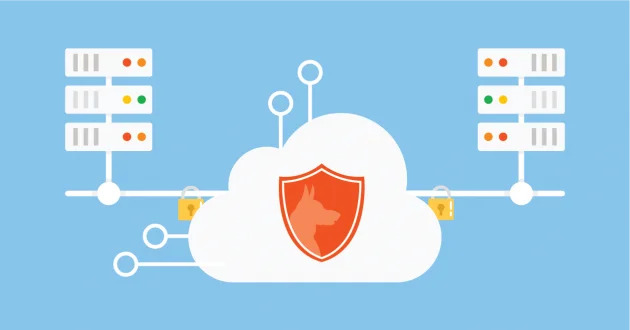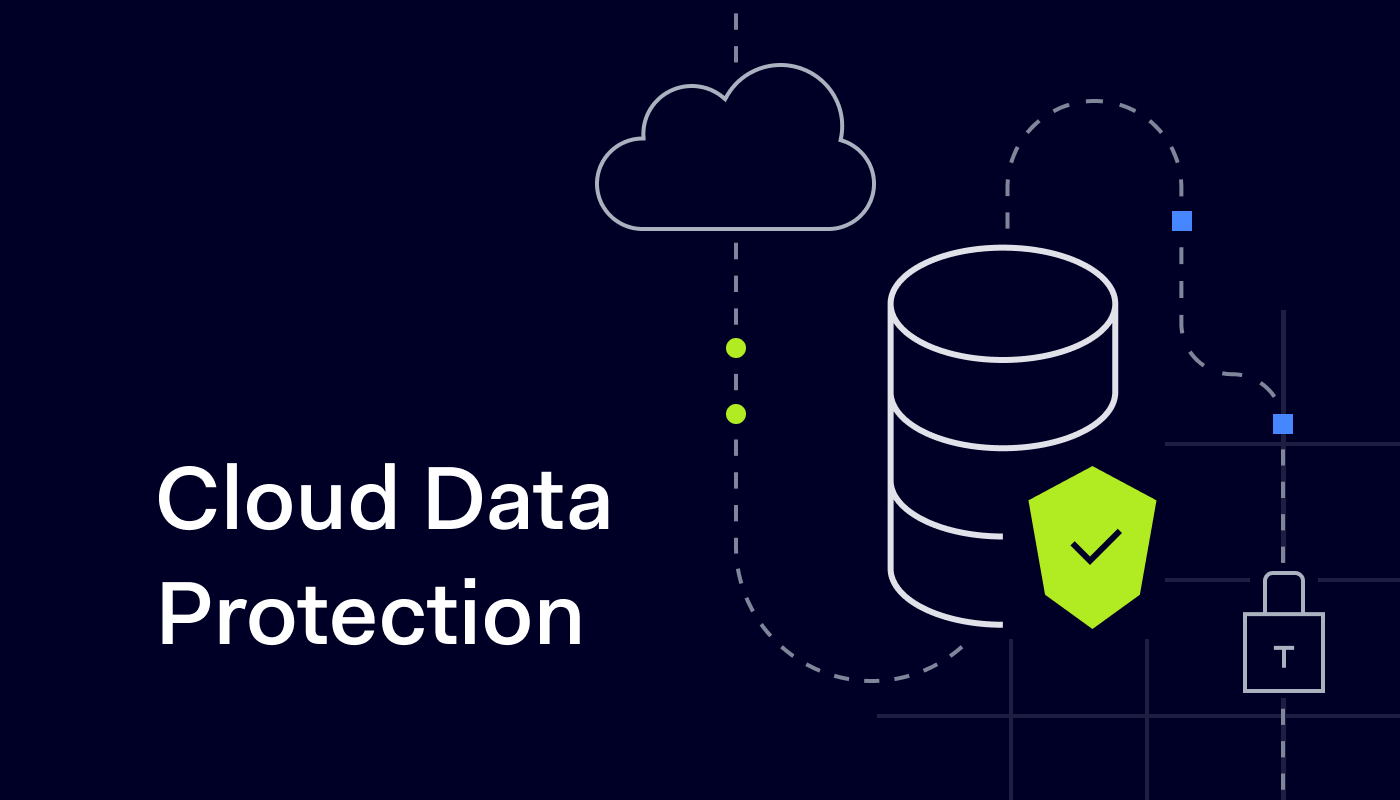What is Cloud Data Protection?
Whether you run a workload in a private cloud, public cloud, or hybrid infrastructure, complying with data regulations is imperative to ensure data security. Any subsequent breach of non-compliant data regulations can result in monetary losses and damaged brand authority. So, you can implement different techniques to achieve cloud data protection. These often include endpoint security, access control, encryption, and regular monitoring.
What is Cloud Data Protection?
Cloud data protection is defined as a particular model of data protection that focuses on protecting data that is stored and managed in a cloud environment, regardless of whether that data is in motion or at rest. Cloud data protection secures and protects data from leakage, loss, or misuse from unauthorized access, exfiltration, and breaches. In the event of corruption or loss, a successful data protection program will maintain your sensitive data.
In order for a cloud data protection strategy to offer maximum protection, it must be designed to protect data of all kinds, including:
- Data in Use: This is sensitive data that is currently being used by an application or software through access control and user authentication.
- Data in Motion: This is confidential data that is moving through a network via encryption or another security measure.
- Data at Rest: This is data that is currently being stored in the cloud or another location.
Overall, cloud data protection will protect data by backing up and recovering processes and systems and secure data by safeguarding customer and company data from both internal and external threats. It also consists of maintaining data privacy by developing management and control access for various segments, which helps ensure that only authorized users access sensitive stored data.

Why is it important?
The shift from on-premises applications and infrastructure to the cloud has completely changed the role of IT from a local cyber security enforcer to a global business enabler. Strong IT now allows for safe hybrid cloud and multicloud adoption and data distribution while preventing data exposure and maintaining increasingly rigid industry and government regulatory requirements.
To achieve this, IT leaders are looking to cloud data protection platforms that provide unified capabilities for the internet, data center, and Software as a Service (SaaS) applications. Doing so ensures public cloud application configurations match best practice standards to prevent data exposure and maintain compliance.
Plus, the shared responsibility model dictates that both enterprises and the cloud providers are incentivized to keep data protected at all costs, so there is a shared initiative on both sides of the cloud “coin,” so to speak.
How is data protected in the cloud?
The cloud solutions hosting your data are located in data centers around the world. Some of the ways data is protected in the cloud include:
- Physical access protection: Security is key in cloud data centers. Cloud infrastructure is usually located in warehouses that are physically secured with limited access, alarms, cameras, and more. Some facilities are patrolled by security personnel.
- Encryption: Data stored on the cloud is usually encrypted, which makes it much harder for cybercriminals to access it.
- Redundancy: Cloud data protection companies create and maintain multiple copies of data across different data centers and locations.
- Cyber security: Cloud data protection services use various software tools to protect against unauthorized access and continuously monitor access to protect against cyber security threats.
Benefits of Cloud Data Protection
Implementing strong cloud data protection provides numerous benefits, such as:
- Data Security: Cloud data protection helps to identify and block attempted data loss and exfiltration. Deploying cloud data protection helps ensure the security of sensitive corporate data.
- Access Management: Effective cloud data security is based on least privilege access controls. Implementing strong cloud data security helps to control and limit access to corporate data in the cloud.
- Data Visibility: Implementing zero trust access controls requires that each access request be individually evaluated based on role-based access controls. This provides the organization with valuable visibility into how its data is actually being used.
- Regulatory Compliance: Data protection regulations are focused on the protection of customers’ sensitive personal data. Enhancing cloud data security helps to ensure that companies meet their regulatory obligations.

3 Cloud Data Protection Best Practices
With so many aspects of data security in cloud computing to think about, it helps to pinpoint the cloud data security best practices that best support cloud data protection efforts.
Here are the top 3 cloud data protection best practices to focus on when moving to the cloud.
Identify and Classify Sensitive Data
Knowing what data you have is essential to effective data loss prevention. As companies develop their cloud security strategy, they may use different cloud environments for different types of data. Identifying and classifying sensitive data can help companies choose the best cloud environment for their needs and set up the right security tools for enhanced access control.
Remediating data breaches involving sensitive data can be difficult if that data isn’t properly classified first. Since cloud data protection is meant to help secure a copy of data in the event of a breach or data loss, it’s crucial to know where your most valuable data is and take the necessary steps to thoroughly protect it with strong access controls.
Adopt a Zero Trust Security Architecture
Since traditional perimeter security practices aren’t helpful when protecting cloud environments, it’s important to reexamine how your company looks at security when adopting cloud data protection. Introducing a zero-trust security architecture—which emphasizes always verifying and authenticating user identity for access to company resources—can make cloud environments much more secure.
Plus, since a zero trust approach assumes that breaches are an ever-present threat, it uniquely supports gaps common in cloud computing data security. While adopting a full zero trust strategy can be challenging in complex environments, it’s an important step to powerfully enhance data protection efforts.
Review Your Shared Security Responsibility
As more companies adopt a multi-cloud environment, many may overlook that different cloud providers have different security practices and your company’s security responsibility won’t necessarily look the same in every vendor relationship. That’s part of why it’s so crucial that companies develop trusting relationships with their cloud providers.
When you start working with a cloud provider, review what security features they offer and what they view as part of their half of the shared security responsibility. This can help companies fill in the security gaps across complex environments and prevent breaches. Companies should also review the vendor’s process for what to do when a breach occurs and incorporate any additional communication steps into their own policy.
Cloud Data Protection Challenges
There are several challenges associated with securing data in the cloud that may contribute to why you would want to follow cloud data protection best practices. These include:
Limited Visibility
Due to the complex nature of multi-cloud infrastructures that companies commonly use, it can be challenging to know where your sensitive data is stored, thus making it difficult to keep it secure. Likewise, with data spread across multiple applications hosted on-premises and in various cloud environments, it can be difficult to define effective access controls that adhere to the least privilege principle.
Encryption
Encryption is vital to secure data at rest, but it may not always be available in cloud environments. Additionally, many applications encrypt data in transit, which can make it difficult to identify sensitive data leaving the network.
Configuration Management
Configuring security settings for cloud infrastructure can be complicated, with each cloud service provider having their own set of security settings. Given that a number of high-profile data breaches have been caused by misconfigured storage containers, it is crucial that organizations check the relevant settings to ensure that no storage containers are publicly accessible by default.
Cloud Security Solutions
Since cloud environments pose unique security challenges that differ from those of on-prem environments, securing cloud data requires specialized security solutions designed specifically for cloud environments.

Conclusion
With more and more services moving toward cloud computing services, priority should be placed on cloud data protection to ensure the longevity of your business. Cloud data protection methodology is not one-size-fits-all. Every security and protection technique must be customized for a business use case. Finally, before selecting a cloud provider, research the vendor’s solutions extensively, including security, SLA, user experience, and customer satisfaction ratings. This information will help you determine if the cloud provider is the best for your specific use cases.